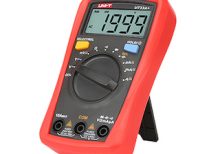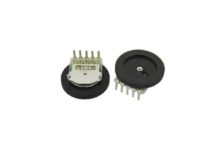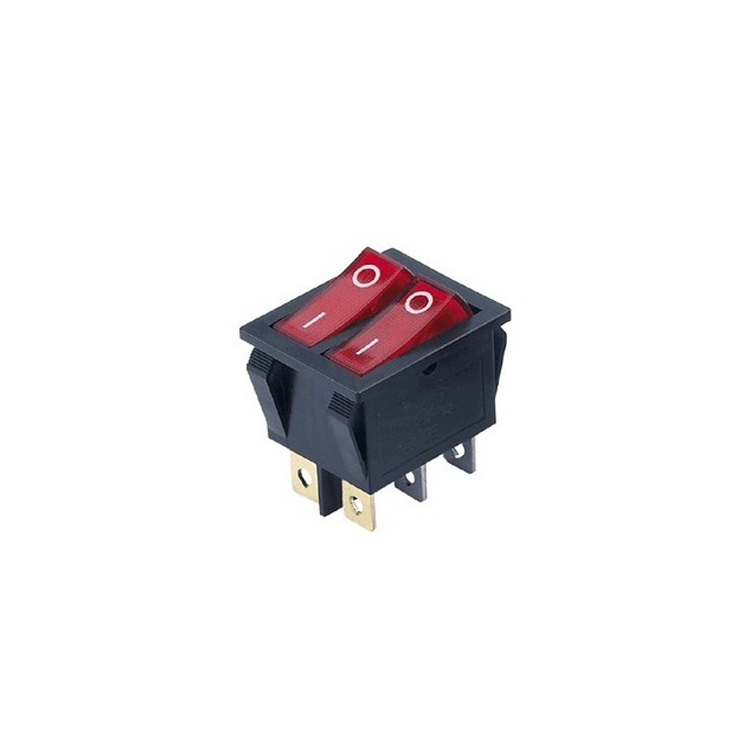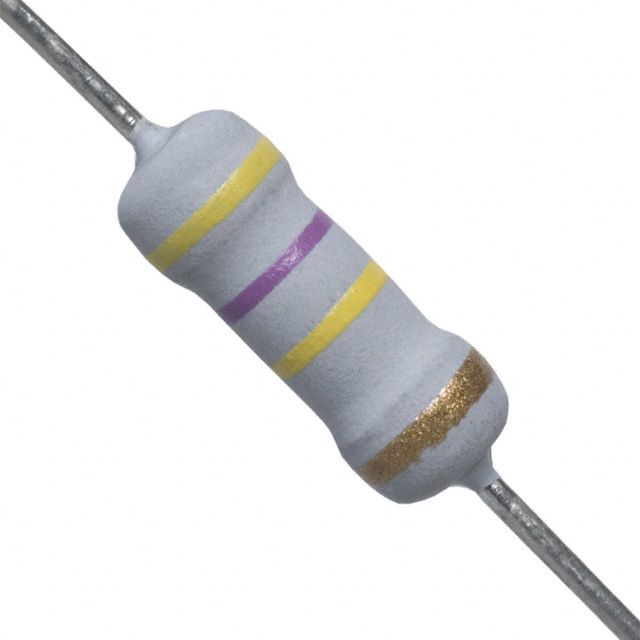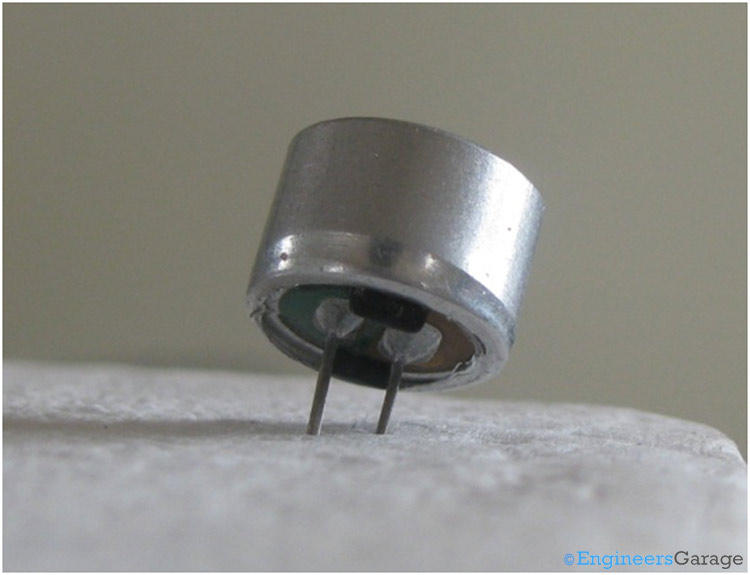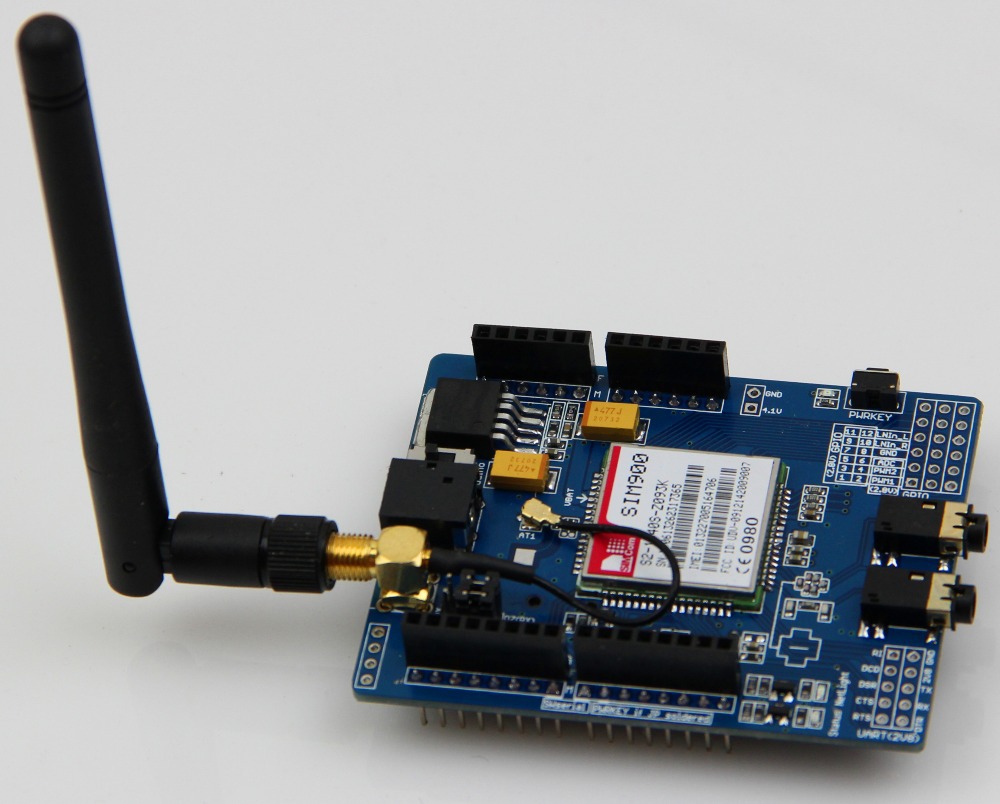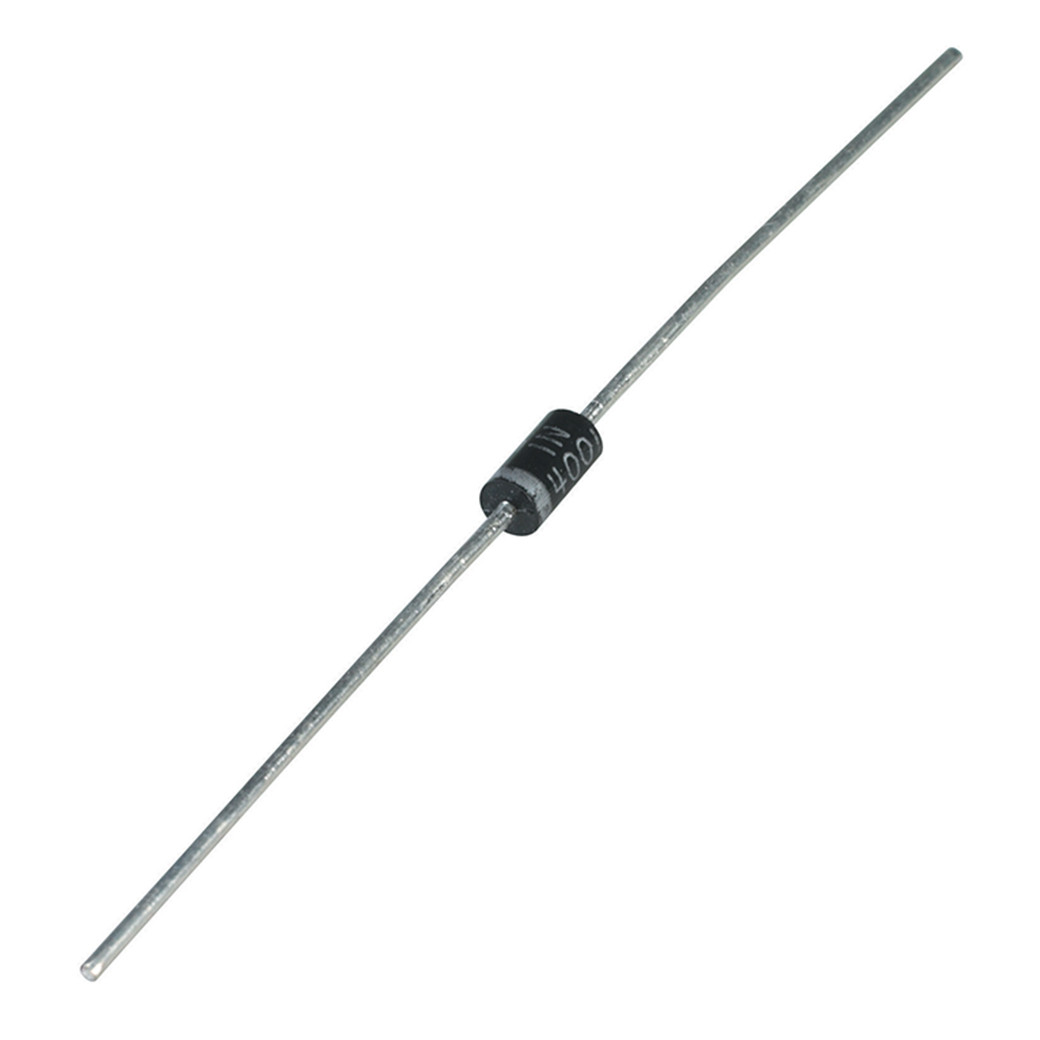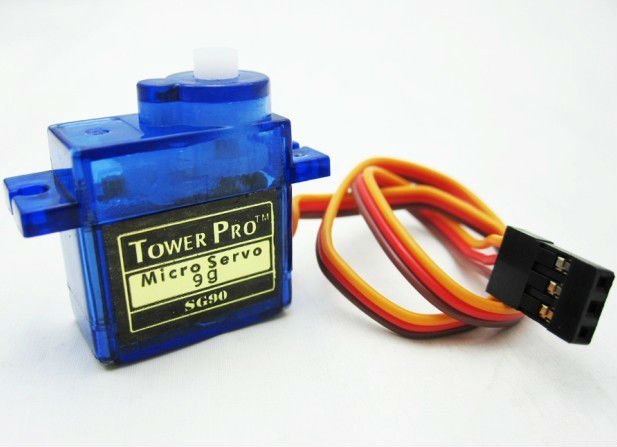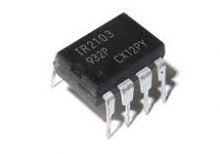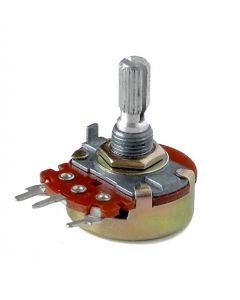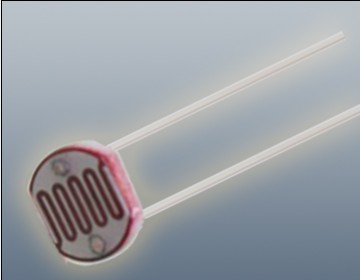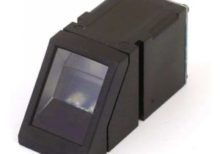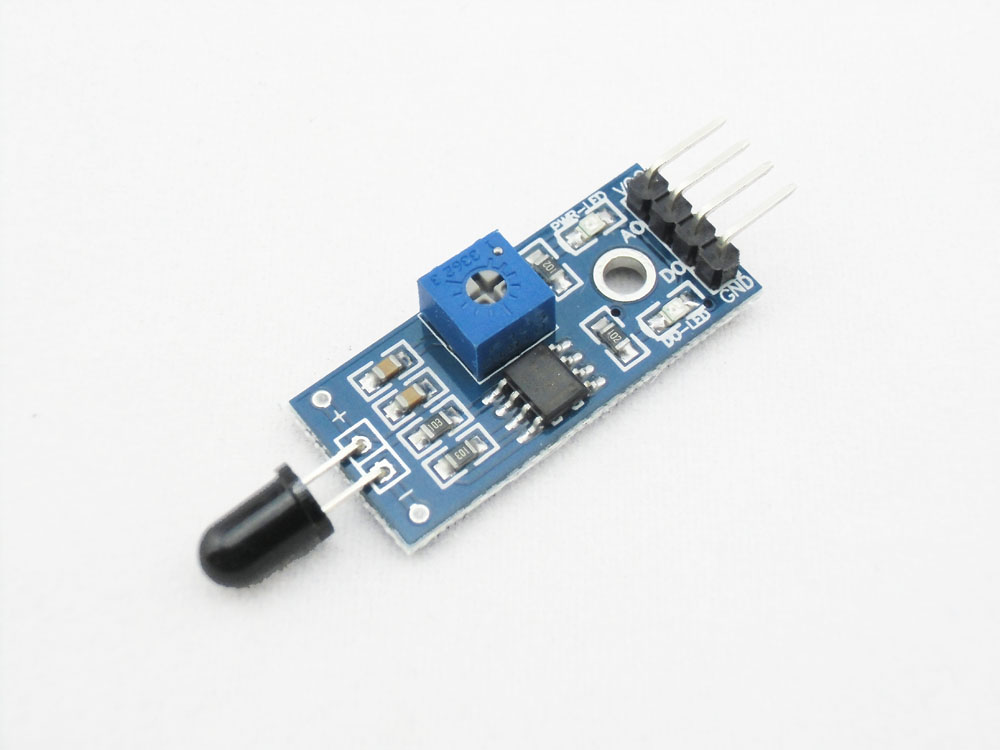|
Description |
The UNI-T UT33A+ is a compact and reliable palm-sized digital multimeter designed for a wide range of electrical measurements. It is suitable for both professionals and hobbyists, offering accurate and easy-to-read results in a durable and portable form factor. The UT33A+ features a large LCD display, auto-ranging capabilities, and multiple measurement functions, making it an essential tool for electrical troubleshooting and diagnostics.
Key Features:
- Display: 2000-count large LCD
- Measurement Functions: Voltage (AC/DC), Current (DC), Resistance, Continuity, and Diode Test
- Auto-Ranging: Yes
- Data Hold: Allows for easy reading of displayed measurements
- Overload Protection: Ensures safe operation under various conditions
- Battery Indicator: Displays low battery status to prevent incorrect measurements
Technical Specifications:
- DC Voltage Range: 200mV / 2V / 20V / 200V / 600V
- AC Voltage Range: 200V / 600V
- DC Current Range: 200μA / 2000μA / 20mA / 200mA / 10A
- Resistance Range: 200Ω / 2kΩ / 20kΩ / 200kΩ / 20MΩ
- Continuity Test: Audible alert for continuity
- Diode Test: Measures forward voltage drop
- Power Supply: 2 x AAA 1.5V batteries
- Dimensions: 130 mm x 73.5 mm x 35 mm
- Weight: 156 g
- Operating Temperature: 0°C to 40°C
- Storage Temperature: -10°C to 50°C
Applications:
- Home Electrical Work: Ideal for troubleshooting and repairing household electrical systems.
- Automotive: Useful for diagnosing electrical issues in vehicles.
- Education: Perfect for teaching and learning basic electrical principles and measurements.
- DIY Projects: Handy for hobbyists and DIY enthusiasts working on electronic projects.
- Professional Use: Suitable for electricians and technicians needing a reliable and portable multimeter.
Datasheet:
For detailed technical information, refer to the UNI-T UT33A+ Multimeter Datasheet.
|
The 10k Single Gear Potentiometer is an adjustable resistor with a resistance range of 0 to 10 kΩ. It features a single gear mechanism for manual adjustment of resistance. This type of potentiometer is commonly used in various electronic circuits to control voltage, adjust signal levels, and fine-tune parameters.
Key Features:
- Resistance: 10 kΩ
- Type: Single gear (single-turn) potentiometer
- Adjustment Mechanism: Manual adjustment using a rotary knob
- Mounting Type: Typically through-hole or surface-mount
- Material: Usually made from conductive carbon or metal film
Technical Specifications:
- Resistance Range: 0 to 10 kΩ
- Tolerance: Typically ±10% or ±20% (depends on the model)
- Number of Turns: Single-turn (single gear)
- Maximum Power Rating: Usually up to 0.5W
- Temperature Coefficient: Varies by model, typically around ±100 ppm/°C
- Mounting Type: Through-hole or surface-mount (varies by design)
- Adjustment Type: Rotary knob or shaft
Applications:
- Volume Control: Used in audio equipment to adjust volume levels.
- Signal Adjustment: Ideal for fine-tuning signals in electronic circuits.
- Calibration: Useful for calibrating and setting parameters in various devices.
- Control Interfaces: Applied in user interfaces for controlling devices and systems.
- Prototyping: Commonly used in electronic prototypes and experimental setups.
Datasheet:
For detailed technical information, refer to the datasheet of the specific 10k single gear potentiometer model, as specifications can vary based on the manufacturer and design.
|
The Double Rocker Power Switch is a dual-position, dual-circuit switch designed for controlling electrical devices. It features a robust and reliable mechanism, making it suitable for a wide range of applications including home appliances, office equipment, and industrial machinery. The switch provides a simple on/off functionality, ensuring easy operation and installation.
Key Features:
- Dual rocker design for two independent circuits
- Durable construction for long-term use
- Easy to install and operate
- Suitable for both AC and DC applications
- Clear on/off markings for user convenience
- Compact and ergonomic design
Technical Specifications:
- Type: Double Rocker Switch
- Current Rating: 15A
- Voltage Rating: 250V AC
- Contact Resistance: <50mΩ
- Insulation Resistance: >100MΩ
- Dielectric Strength: 1500V AC for 1 minute
- Operating Temperature Range: -25°C to +85°C
- Dimensions: 30mm x 25mm x 22mm
Applications:
- Home appliances
- Office equipment
- Industrial machinery
- Power tools
- Lighting fixtures
- Consumer electronics
Usage:
- Ensure the power supply is disconnected before installing the switch.
- Mount the switch in the desired location using the appropriate hardware.
- Connect the electrical wires to the switch terminals, ensuring correct polarity.
- Secure the switch and restore power to test its functionality.
- Use the rocker switch to control the connected device with ease.
Caution:
- Always disconnect power before installation to prevent electrical shock.
- Verify the current and voltage ratings to ensure compatibility with your application.
- Follow the manufacturer’s guidelines for proper installation and operation.
|
The DC-DC USB Adjustable Buck-Boost Converter is designed to provide a stable and adjustable output voltage from a USB power source. It features a seven-segment display for real-time monitoring of input and output voltages. This converter supports both step-up (boost) and step-down (buck) operations, making it suitable for a wide range of electronic applications.
Key Features:
- Input Voltage Range: 5V.
- Adjustable Output Voltage: Allows for adjustment of output voltage from 3.3V to 24V.
- Buck-Boost Conversion: Capable of boosting or bucking the input voltage as required.
- Seven Segment Display: Provides clear and easy-to-read display of input and output voltages.
- High Efficiency: Efficient power conversion with minimal energy loss.
- Compact and Lightweight: Convenient size for various applications.
- Protection Features: Includes over-current, over-voltage, and short-circuit protection.
Technical Specifications:
- Input Voltage Range: 5V
- Output Voltage Range: 3.3V to 24V (adjustable)
- Output Current: Up to 2A (depending on input and output voltage)
- Display Type: Seven Segment Display
- Conversion Efficiency: Up to 92%
- Protection: Over-current, over-voltage, short-circuit protection
- Dimensions: 60mm x 30mm x 20mm
- Weight: 25g
Applications:
- Portable Power Supplies: Create a portable power supply with adjustable output for various devices.
- DIY Electronics Projects: Ideal for hobbyists and makers requiring different voltage levels.
- Voltage Regulation: Provides a stable voltage output for electronics and prototypes.
- Battery Management: Useful in battery-powered projects for voltage adjustment and regulation.
- Testing and Prototyping: Facilitates testing and prototyping with adjustable voltage needs.
Datasheet:
For detailed technical specifications, refer to the DC-DC USB Adjustable Buck-Boost Converter Datasheet.
|
The 470KΩ 1W resistor is a fixed-value resistor designed for applications requiring moderate power dissipation. It is used to limit current, divide voltage, and protect components in various electronic circuits. This resistor is suitable for high-impedance circuits, signal conditioning, and applications where precision and reliability are essential.
Key Features:
- Fixed resistance value of 470KΩ
- Power rating of 1 watt
- Flame-resistant coating for safety
- High reliability and stability
- Axial leads for easy mounting on printed circuit boards (PCBs)
- Suitable for high-impedance and signal processing applications
Technical Specifications:
- Resistance Value: 470KΩ
- Power Rating: 1W
- Tolerance: ±5% (J) or ±1% (F), depending on the model
- Temperature Coefficient: ±200 ppm/°C
- Operating Temperature Range: -55°C to +155°C
- Body Size: Approx. 4.0mm (Diameter) x 11.5mm (Length)
- Lead Diameter: Approx. 0.6mm
- Material: Metal oxide film or carbon film
- Maximum Working Voltage: 250V
- Maximum Overload Voltage: 400V
Applications:
- Signal Conditioning: Used in circuits to control and adjust signal levels.
- High-Impedance Circuits: Suitable for high-impedance applications and input stages.
- Voltage Dividers: Ideal for use in voltage divider circuits.
- Audio Equipment: Used in audio equipment for biasing and signal conditioning.
- General Electronics: Suitable for a variety of electronic devices and circuits.
Usage:
- Identify the resistor’s resistance value and power rating by reading the color code or label.
- Solder the resistor onto the PCB or connect it into the circuit using the axial leads.
- Ensure the resistor is placed in a location that allows for adequate heat dissipation.
- Verify the resistor’s connections and test the circuit to ensure proper operation.
Caution:
- Do not exceed the resistor’s maximum power rating to avoid overheating and potential failure.
- Ensure proper ventilation and heat dissipation when using the resistor in high-power applications.
- Handle with care to prevent damage to the resistor’s leads and coating.
- Verify the resistor’s resistance value and tolerance before use in precision circuits.
|
The ACS712 is a current sensor from Allegro Microsystems designed to measure current with a maximum rating of 30A. It provides an analog output voltage that is proportional to the current flowing through the sensor. The ACS712 is widely used in power monitoring, load current measurement, and over-current protection applications due to its high accuracy and ease of integration with microcontrollers and other electronic systems.
Key Features:
- Measures AC and DC current up to 30A
- Provides an analog output voltage proportional to the current
- High accuracy with low offset and temperature drift
- Integrated Hall effect sensor for non-invasive current measurement
- Small size and easy to integrate into various circuits
- On-chip signal conditioning and protection
Technical Specifications:
- Sensor Type: Hall Effect Current Sensor
- Current Range: ±30A (AC or DC)
- Output Voltage Range: Typically 0V to Vcc
- Sensitivity: 66mV/A (typical)
- Operating Voltage: 5V ±5%
- Zero Current Offset Voltage: Vcc/2 (typical)
- Temperature Range: -40°C to +85°C
- Current Measurement Accuracy: ±1.5% of full-scale current (typical)
- Package Type: SOP-8 or similar
Applications:
- Power monitoring and control
- Over-current protection systems
- Load current measurement in power supplies
- Motor current sensing
- Energy monitoring and management
Usage:
- Connect the ACS712 sensor to your microcontroller or development board, ensuring correct connection of the power supply (Vcc, GND) and the output voltage pin.
- Route the current-carrying conductor through the sensor to measure the current.
- Read the analog output voltage, which is proportional to the current, and process it according to your application needs.
- Calibrate the sensor if necessary to ensure accurate current measurement.
Caution:
- Ensure the current flowing through the sensor does not exceed the maximum rating (30A) to avoid damage.
- Properly insulate and protect the sensor and connections to prevent short circuits and ensure safe operation.
- Verify the power supply voltage and connections to avoid incorrect readings or sensor damage.
Datasheet:
For detailed technical specifications, refer to the ACS712 Datasheet.
|
The Condenser Mic 4.5×2.2mm is a small-sized, high-sensitivity electret microphone. It is designed for a wide range of audio applications, including voice recording, telecommunication devices, and various consumer electronics. Its compact size and high sensitivity make it ideal for embedding in small devices.
Key Features:
- High sensitivity and low noise
- Small and compact size
- Wide frequency response
- Low power consumption
- Omnidirectional pickup pattern
- Easy to integrate into electronic circuits
Technical Specifications:
- Type: Electret condenser microphone
- Dimensions: 4.5mm (diameter) x 2.2mm (height)
- Sensitivity: -42dB ±3dB (0dB = 1V/Pa at 1kHz)
- Frequency Response: 20Hz to 16kHz
- Impedance: ≤ 2.2kΩ
- Operating Voltage: 1.5V to 10V DC
- Current Consumption: ≤ 0.5mA
- Signal-to-Noise Ratio: ≥ 60dB
- Directivity: Omnidirectional
- Operating Temperature Range: -20°C to +70°C
Applications:
- Voice recording devices
- Telecommunication equipment
- Hearing aids
- Portable audio recorders
- Consumer electronics
- Smart home devices
- Speech recognition systems
Usage:
- Connection:
- Connect the microphone’s output pin to the input of an amplifier or preamp circuit.
- Connect the power supply (1.5V to 10V DC) to the microphone.
- Ensure the ground connection is properly made to avoid noise interference.
- Integration:
- Place the microphone in a suitable location to capture sound effectively.
- Embed the microphone in devices ensuring the sound entry is not obstructed.
- Circuit Design:
- Use appropriate capacitors and resistors as per the microphone’s requirements.
- Design the circuit to provide a stable power supply and proper impedance matching.
Caution:
- Handle the microphone with care to avoid physical damage.
- Protect the microphone from exposure to moisture and extreme temperatures.
- Avoid applying excessive voltage to prevent damage to the microphone.
Datasheet:
For detailed technical specifications, refer to the Condenser Microphone Datasheet.
|
The Simcom SIM900 Shield is a quad-band GSM/GPRS shield designed for use with Arduino and other microcontroller platforms. It provides a way to add GSM communication capabilities to your project, enabling features such as SMS, voice calls, and data transfer over GPRS. The shield is compact and integrates easily into existing projects, making it ideal for IoT applications, remote monitoring, and other communication-based projects.
Key Features:
- Quad-band GSM/GPRS 850/900/1800/1900 MHz
- Supports voice calls, SMS, and GPRS data transfer
- Compatible with Arduino and other microcontroller platforms
- Integrated UART interface
- Low power consumption
- Compact design with standard Arduino shield form factor
- Built-in antenna connector
Technical Specifications:
- Operating Voltage: 5V (supplied from Arduino)
- Power Consumption:
- Idle mode: 1.5 mA
- Active mode: 250 mA (average)
- Peak: 2A
- Communication Protocols: GSM, GPRS (Class 10)
- Data Rates:
- GPRS: Up to 85.6 kbps (downlink and uplink)
- CSD: Up to 14.4 kbps
- SIM Card Slot: Standard SIM card
- UART Interface: 9600 to 115200 bps
- Operating Temperature Range: -40°C to +85°C
- Dimensions: Compatible with standard Arduino shield form factor
Applications:
- IoT projects
- Remote monitoring systems
- Home automation
- Vehicle tracking systems
- Security systems
- SMS-based control systems
- Data logging
Usage:
- Installation:
- Stack the SIM900 shield onto your Arduino board.
- Insert a standard SIM card into the SIM card slot.
- Connect an external antenna to the antenna connector if needed.
- Connection:
- Ensure the shield is properly seated on the Arduino headers.
- Connect the Arduino to a power source and a USB connection for programming.
- Programming:
- Use the SoftwareSerial library to communicate with the SIM900 module via Arduino.
- Send AT commands to control the module and perform tasks such as sending SMS, making calls, or connecting to the internet.
- Example: Initialize the module and send an SMS
- Troubleshooting:
-
- Ensure the SIM card is activated and has sufficient credit for operation.
- Check antenna connection for signal strength.
- Use the AT command AT+CSQ to check signal quality.
Caution:
- Ensure proper handling to avoid damage from electrostatic discharge (ESD).
- Verify power supply requirements to prevent damage to the module.
- Avoid placing the shield in areas with poor signal reception to ensure reliable operation.
Datasheet:
For detailed technical specifications, refer to the SIM900 Datasheet.
|
The 1N4001 is a general-purpose rectifier diode designed for a wide range of applications including power supplies, converters, and freewheeling diodes. This silicon diode is known for its reliability, low forward voltage drop, and high surge current capability. It is suitable for use in circuits requiring rectification, reverse polarity protection, and other general-purpose diode functions.
Key Features:
- Type: Silicon rectifier diode
- Forward Voltage Drop (Vf): Typically 1.1V at 1A
- Average Rectified Current (Io): 1A
- Peak Repetitive Reverse Voltage (Vrrm): 50V
- Surge Current (Ifsm): 30A
- Recovery Time: Standard recovery
- Package: DO-41
Technical Specifications:
- Maximum Repetitive Peak Reverse Voltage (Vrrm): 50V
- Maximum RMS Voltage (Vrms): 35V
- Maximum DC Blocking Voltage (Vdc): 50V
- Average Rectified Output Current (Io): 1A
- Non-Repetitive Peak Forward Surge Current (Ifsm): 30A
- Forward Voltage (Vf): 1.1V at 1A
- Reverse Current (Ir): 5µA at 50V
- Operating Temperature Range: -65°C to +150°C
Applications:
- Power supply rectification
- Freewheeling diode in motor applications
- Reverse polarity protection
- Converters and inverters
- General-purpose diode functions
Usage:
- Connect the anode (positive lead) to the positive side of the circuit.
- Connect the cathode (marked with a band) to the negative side of the circuit.
- Ensure the diode is correctly oriented to prevent reverse voltage damage.
- Integrate the diode into the circuit to achieve the desired rectification or protection function.
Caution:
- Verify the voltage and current ratings to ensure compatibility with your circuit.
- Avoid exceeding the maximum ratings to prevent damage to the diode.
- Ensure proper thermal management if operating near maximum current ratings.
Datasheet:
For detailed technical specifications, refer to the 1N4001 Diode Datasheet.
|
The SG90 is a popular micro servo motor known for its small size, lightweight, and reliable performance. It is ideal for use in RC applications, robotics, and other hobbyist and DIY projects. The servo provides precise control over angular position, speed, and acceleration.
Key Features:
- Lightweight and compact design
- High precision and stable movement
- Nylon gears for smooth operation
- Compatible with most radio control systems
- Easy to interface with microcontrollers
- Includes various servo horns and mounting hardware
Technical Specifications:
- Operating Voltage: 4.8V to 6.0V
- Stall Torque: 1.8 kg/cm (4.8V), 2.2 kg/cm (6.0V)
- Speed: 0.12 sec/60° (4.8V), 0.10 sec/60° (6.0V)
- Rotation Angle: 0° to 180°
- Control System: PWM (Pulse Width Modulation)
- Gear Type: Nylon
- Connector Wire Length: 250mm
- Dimensions: 23mm x 12.2mm x 29mm
- Weight: 9g
Applications:
- RC vehicles (cars, airplanes, boats)
- Robotics
- Mechanical arms and grippers
- Pan/tilt mechanisms for cameras and sensors
- DIY electronics projects
- Animatronics
Usage:
- Connection:
- Connect the VCC (red) wire to a 5V power supply.
- Connect the GND (brown) wire to ground.
- Connect the signal (orange) wire to a PWM output on the microcontroller or servo controller.
- Control:
- Use PWM signals to control the angular position of the servo.
- Adjust the pulse width (typically between 1ms and 2ms) to move the servo to the desired position.
- Mounting:
- Use the included servo horns and mounting hardware to attach the servo to your project.
- Ensure the servo is securely mounted to handle the torque generated during operation.
Caution:
- Avoid stalling the servo for extended periods to prevent overheating.
- Ensure the servo operates within the specified voltage range to avoid damage.
- Handle the servo carefully to prevent damage to the internal gears and motor.
Datasheet:
For detailed technical specifications, refer to the SG90 Servo Datasheet.
|
The S9014 is an NPN bipolar junction transistor (BJT) designed for general-purpose applications, including amplification and switching. It features high current gain and low noise, making it suitable for low-power electronic circuits. Its compact TO-92 package ensures ease of integration into various designs.
Key Features:
- Type: NPN Bipolar Junction Transistor (BJT)
- High Gain: High current gain (hFE) for effective amplification
- Low Noise: Suitable for low-noise applications
- Compact Package: Available in a TO-92 package for ease of use
Technical Specifications:
- Collector-Emitter Voltage (Vce): 50V
- Collector-Base Voltage (Vcb): 50V
- Emitter-Base Voltage (Veb): 6V
- Collector Current (Ic): 500mA
- Power Dissipation (Ptot): 400mW
- DC Current Gain (hFE): 100 to 600
- Transition Frequency (ft): 150MHz
- Package Type: TO-92
Applications:
- Signal Amplification: Ideal for low-power amplification circuits
- Switching: Suitable for low-power switching applications
- Audio Circuits: Used in audio frequency amplification and processing
- General Electronics: Commonly used in general-purpose electronic circuits and projects
Usage:
- Circuit Design: Integrate the S9014 transistor into your circuit based on the desired application.
- Biasing: Properly bias the transistor to ensure effective operation in amplification or switching roles.
- Connection: Connect the collector, base, and emitter terminals according to your circuit design.
- Testing: Verify the circuit operation to ensure the transistor is performing as expected.
Caution:
- Voltage and Current Ratings: Do not exceed the maximum rated voltage and current to avoid damage.
- Heat Management: Ensure adequate cooling to prevent overheating during operation.
- Handling: Handle with care to avoid damage from electrostatic discharge (ESD).
Datasheet:
For detailed technical specifications, refer to the S9014 Transistor Datasheet.
|
The DS1307 RTC (Real-Time Clock) Module is a compact and accurate timekeeping module used to keep track of time in electronic systems. It is based on the DS1307 IC, which provides accurate timekeeping capabilities and can operate with a battery backup to maintain time during power outages. This module is widely used in various applications including clocks, data loggers, and embedded systems.
Key Features:
- Accurate timekeeping with a real-time clock (RTC) IC
- Battery backup to maintain time during power loss
- Easy-to-use I²C interface for communication with microcontrollers
- Provides seconds, minutes, hours, day, date, month, and year
- Low power consumption for battery operation
- Integrated crystal oscillator for precise timekeeping
- Compact and easy to integrate into projects
Technical Specifications:
- IC Used: DS1307
- Interface: I²C (2-wire)
- Operating Voltage: 5V (typical)
- Battery Backup: CR2032 or equivalent lithium battery (not included)
- Accuracy: ±2 minutes per month at 25°C
- Clock Frequency: 32.768 kHz (crystal oscillator)
- Operating Temperature Range: -40°C to +85°C
- Dimensions: Varies by manufacturer (common size: 40mm x 20mm)
- Weight: Varies by manufacturer (typically around 10g)
Applications:
- Real-time clocks in electronic devices
- Data logging and timestamping
- Time-based triggering in automation systems
- Embedded systems requiring accurate timekeeping
- Educational projects and prototypes
Usage:
- Connect the DS1307 RTC Module to your microcontroller via the I²C interface (SDA and SCL lines).
- Insert a compatible lithium battery into the module to provide backup power.
- Use the appropriate library or driver to interface with the DS1307 and set the current date and time.
- Retrieve and update the time as needed for your application.
Caution:
- Ensure the battery is properly installed to maintain time during power outages.
- Handle the module with care to avoid damaging the crystal or solder connections.
- Verify I²C connections to avoid communication issues.
Datasheet:
For detailed technical specifications, refer to the DS1307 Datasheet.
|
The 65mm Smart Car Tyre Narrow Wheel is designed for use in small robotics and smart car projects. These wheels provide excellent traction and durability, making them ideal for navigating various surfaces. Their narrow design allows for precise control and maneuverability, which is essential for robotics applications.
Key Features:
- Size: 65mm diameter, narrow width for precise control
- Durable Material: Made from high-quality rubber for enhanced durability and grip
- Easy Installation: Compatible with standard smart car and robot axles
- Smooth Performance: Ensures stable and smooth movement on various surfaces
- Lightweight: Lightweight construction for efficient energy use in small robotic projects
Technical Specifications:
- Diameter: 65mm
- Width: 8mm
- Material: High-quality rubber with plastic hub
- Axle Hole Diameter: 3mm
- Weight: 15g per wheel
- Color: Black
Applications:
- Smart Car Projects: Ideal for DIY smart car kits and educational robotics
- Robotics Competitions: Suitable for robotics competitions requiring precise control
- Line Following Robots: Enhances the performance of line-following robots
- Obstacle Avoidance Robots: Provides reliable movement for obstacle avoidance tasks
- Prototyping: Useful in various prototyping and small-scale robotics projects
|
The IR2103PBF is a high voltage, high-speed power MOSFET and IGBT driver with independent high and low side referenced output channels. It is designed to drive high-side and low-side N-channel power MOSFETs or IGBTs in a half-bridge configuration. The device features a floating channel designed for bootstrap operation, allowing it to drive the high-side switch up to 600V.
Key Features:
- Gate drive supply range from 10V to 20V
- Floating channel can be used to drive an N-channel power MOSFET or IGBT in the high-side configuration up to 600V
- Gate drive outputs: 2A peak source, 2A peak sink
- Independent high-side and low-side channels
- Under-voltage lockout for both channels
- Logic input (IR2103) compatible with standard CMOS or LSTTL outputs
- Matched propagation delay for both channels
- Low side output in phase with input signal
- High side output out of phase with input signal
Technical Specifications:
- Supply Voltage (Vcc): 10V – 20V
- Floating Supply Voltage (Vb): up to 600V
- Logic Supply Voltage (Vss): -5V – 20V
- Output Source Current (Io+): 2A
- Output Sink Current (Io-): 2A
- Gate Drive Output Voltage (Vout): 10V – 20V
- Propagation Delay: 120ns (typical)
- Operating Temperature Range: -40°C to +125°C
- Package: PDIP-8
Applications:
- Motor drive applications
- Induction heating
- UPS systems
- DC-DC converters
- Switch-mode power supplies
Datasheet:
For detailed technical information, please refer to the IR2103PBF Datasheet.
|
The 100KΩ Potentiometer is an adjustable resistor with a nominal resistance of 100,000 ohms. It is used to fine-tune electrical circuits by varying the resistance within a circuit, making it ideal for applications such as volume control, calibration adjustments, and signal tuning.
Key Features:
- Adjustable resistance range: 0Ω to 100KΩ
- High accuracy and stability
- Available in various types such as rotary or slide
- Compact design for versatile use in electronic devices
- Easy integration into both through-hole and surface-mount designs
Technical Specifications:
- Resistance Value: 100KΩ
- Tolerance: ±10%
- Power Rating: Typically 0.5W to 1W
- Adjustment Type: Rotary or Slide
- Temperature Range: -55°C to +125°C
- Package Type: Through-hole or Surface-mount
Applications:
- Audio volume controls
- Signal tuning and calibration
- Adjustments in electronic devices and circuits
- Brightness and contrast settings
Usage:
- Integrate the potentiometer into your circuit based on the schematic diagram.
- Adjust the control to set the desired resistance value.
- Verify that the potentiometer is securely connected and functioning correctly.
- Use the potentiometer for precise adjustments and tuning as needed.
Caution:
- Avoid mechanical stress during adjustment to prevent damage to the potentiometer.
- Ensure the power rating of the potentiometer matches your circuit requirements to avoid overheating.
- Handle with care to avoid damage to the internal components.
|
The Photoresistor LDR (Light Dependent Resistor) is a variable resistor whose resistance changes with the light intensity that falls upon it. It is widely used in light sensing applications and projects where detecting light levels is essential. LDRs are cost-effective, easy to use, and suitable for various electronic projects, including light meters, street lights, and other light-sensitive devices.
Key Features:
- Light Sensitivity: Resistance decreases with increasing light intensity
- Simple Interface: Easy to integrate with microcontrollers and analog circuits
- Low Cost: Economical solution for light detection
- Wide Range of Light Detection: Can detect various light levels from low to high intensity
- Compact Size: Fits easily into small projects
Technical Specifications:
- Resistance in Darkness: Typically 1MΩ (depending on specific model)
- Resistance in Bright Light: Typically 10-20kΩ (depending on specific model)
- Spectral Peak: Approximately 540nm (most sensitive to green light)
- Response Time: Rise time ~20ms, fall time ~30ms
- Operating Temperature Range: -30°C to +70°C
- Diameter: Typically 5mm to 10mm (depending on specific model)
Applications:
- Light Meters: Measure light intensity for photography and scientific applications.
- Street Lights: Automatic on/off control based on ambient light levels.
- Alarm Systems: Detect changes in light levels for security purposes.
- Consumer Electronics: Light-sensitive control in devices like clocks and displays.
- Educational Projects: Common component in learning modules for electronics.
Usage:
- Circuit Integration: Connect the LDR in a voltage divider circuit with a fixed resistor to create a variable voltage output based on light intensity.
- Microcontroller Interface: Read the voltage output from the LDR circuit using an analog input pin on a microcontroller.
- Programming: Write code to interpret the analog signal and perform actions based on light levels (e.g., turning on an LED when it gets dark).
- Testing: Calibrate the LDR circuit for the desired light sensitivity by adjusting the fixed resistor value.
Caution:
- Environment: Avoid exposure to extreme temperatures and humidity, which may affect the LDR’s performance.
- Handling: Handle with care to avoid damaging the sensitive surface of the LDR.
Datasheet:
For detailed technical specifications, refer to the Photoresistor LDR Datasheet.
|
The QMC5883L is a high-performance digital magnetometer that measures magnetic fields with high accuracy. It is a three-axis magnetic sensor used in various applications including compass modules, orientation sensing, and navigation systems. The QMC5883L is known for its reliability and compact form factor, making it suitable for both consumer and industrial applications.
Key Features:
- Three-Axis Measurement: Provides magnetic field measurements in X, Y, and Z axes
- Digital Interface: I2C communication for easy integration with microcontrollers
- High Sensitivity: Accurate measurement of magnetic fields
- Low Power Consumption: Efficient operation for battery-powered applications
- Compact Size: Small package suitable for space-constrained designs
- Calibration Capability: Can be calibrated for improved accuracy
Technical Specifications:
- Dimensions:
- Package Type: LGA (Land Grid Array) 16-pin
- Length x Width x Height: 3 mm x 3 mm x 1 mm
- Weight: Approximately 0.2 g
- Supply Voltage: 2.16V to 3.6V DC
- Communication Interface: I2C (up to 400 kHz)
- Magnetic Field Range: ±1.3 to ±8.1 Gauss
- Resolution: 0.1 µT
- Sensitivity: 0.1 µT/LSB
- Power Consumption: 2 mA (typical)
- Operating Temperature: -40°C to +85°C
Applications:
- Compass Modules: Used in digital compass systems for navigation and orientation.
- Navigation Systems: Integrated into GPS and other navigation systems for enhanced accuracy.
- Robotics: Helps in determining orientation and heading for autonomous robots.
- Consumer Electronics: Used in smartphones, tablets, and wearable devices for orientation sensing.
- Industrial Applications: Employed in industrial equipment for magnetic field measurement and monitoring.
Datasheet:
For detailed technical information, refer to the QMC5883L Magnetometer Datasheet.
|
The Big LDR is a light-sensitive resistor used to detect and measure the intensity of light. Its resistance decreases with increasing light intensity, making it an ideal component for light-sensing applications. The large size of this LDR allows for higher sensitivity and broader detection area, making it suitable for a variety of applications in electronics and automation.
Key Features:
- High sensitivity to light
- Large detection surface area
- Fast response time
- Simple to use and integrate into circuits
- Low cost and reliable performance
- Suitable for a wide range of light levels
Technical Specifications:
- Resistance in Darkness: 1MΩ (typical)
- Resistance in Light: 10kΩ to 20kΩ (typical, under standard light conditions)
- Response Time: Rise – 20ms, Fall – 30ms
- Maximum Voltage: 150V DC
- Maximum Power Dissipation: 100mW
- Operating Temperature Range: -30°C to +75°C
- Dimensions: Diameter 20mm, Height 5mm (approximate)
- Weight: 2g
Applications:
- Education: Ideal for experiments and teaching about light sensing and resistance.
- Prototyping: Used in developing and testing light-sensitive circuits.
- DIY Projects: Common in hobby projects like automatic night lights and solar trackers.
- IoT Projects: Used in smart lighting systems and environmental monitoring.
- Embedded Systems: Integrated into devices for automatic brightness control and light detection.
Datasheet:
For detailed technical information, refer to the Big LDR Datasheet provided by the manufacturer.
|
The MQ5 Methane and Natural Gas Sensor Module is a gas sensor designed for detecting methane, natural gas, and LPG concentrations in the air. It is widely used in gas leakage detection equipment, home safety devices, and various industrial applications. The module provides a quick and accurate response to gas presence, making it ideal for safety and environmental monitoring.
Key Features:
- High Sensitivity: Detects methane, natural gas, and LPG with high accuracy.
- Fast Response Time: Quickly responds to changes in gas concentration.
- Long Life: Durable sensor with a long operational life.
- Analog Output: Provides an analog voltage output proportional to the gas concentration.
- Digital Output: Includes a digital output for threshold-based gas detection.
- Easy Integration: Simple to integrate into various electronic circuits and systems.
Technical Specifications:
- Gas Detection: Methane, Natural Gas, LPG
- Detection Range: 200 ppm to 10000 ppm (parts per million)
- Operating Voltage: 5V DC
- Power Consumption: ≤ 800 mW
- Preheat Time: ≤ 20 seconds
- Analog Output: 0-5V
- Digital Output: High/Low signal
- Operating Temperature Range: -20°C to +50°C
- Humidity Range: 95% RH
- Dimensions: 32mm x 22mm x 27mm (L x W x H)
Applications:
- Gas Leakage Detectors: Used in home and industrial gas leakage detection systems.
- Environmental Monitoring: Monitors air quality and gas concentrations in various environments.
- Safety Systems: Integrated into safety systems for gas detection and alarm triggers.
- Industrial Equipment: Used in industrial applications for gas concentration monitoring.
- DIY Projects: Suitable for hobbyist and educational electronics projects.
Usage:
- Connection: Connect the module to a 5V power supply and interface the analog or digital output to a microcontroller or monitoring system.
- Calibration: Allow the sensor to preheat for the specified time to ensure accurate readings.
- Monitoring: Continuously monitor the analog output for gas concentration levels or use the digital output for threshold-based detection.
- Integration: Integrate the sensor module into your final application, ensuring proper placement for gas detection.
Caution:
- Preheating: Ensure the sensor is preheated before use for accurate detection.
- Voltage Supply: Use the specified voltage to avoid damaging the sensor.
- Environmental Conditions: Operate the sensor within the recommended temperature and humidity ranges.
Datasheet:
For detailed technical specifications, refer to the MQ5 Methane, Natural Gas Sensor Module Datasheet.
|
The Allen key, also known as a hex key or hex wrench, is a tool designed for driving screws and bolts with hexagonal sockets. The Size 1.5 mm Allen key is specifically used for fasteners with a 1.5 mm hexagonal socket. This is one of the smallest Allen keys available and is typically used in precision applications where very small fasteners are required.
Key Features:
- Size: 1.5 mm (hexagonal socket size)
- Shape: Commonly L-shaped or T-shaped
- Material: Often made from high-quality steel or chrome vanadium for strength and durability
- Finish: Typically coated with black oxide, chrome plating, or other protective finishes to resist corrosion
- Type: Available in various designs including short or long arm, and sometimes with a ball end for ease of use in tight spaces
Technical Specifications:
- Hexagon Size: 1.5 mm
- Length: Varies by design, usually ranging from 30 mm to 80 mm for short arms, and longer for T-handle or L-handle versions
- Material: Steel, chrome vanadium, or other hardened materials
- Finish: Black oxide, chrome-plated, or other protective coatings
Applications:
- Precision Work: Ideal for tasks involving very small screws and bolts, such as in electronics and small machinery.
- Model Building: Commonly used in assembling and repairing model kits where very small fasteners are used.
- Bicycles: Useful for adjusting components on bicycles that require a small hex size.
- Electronics: Essential for assembling and servicing electronic devices with tiny hex screws.
- Jewelry Making: Used in precision applications where very small screws are common.
Datasheet:
Allen keys generally do not have detailed datasheets, but tool manufacturers or suppliers can provide specifications.
|
The AS608 Optical Fingerprint Module is a compact and efficient fingerprint recognition device designed for integration into security systems. It uses optical fingerprint sensing technology to capture and store fingerprint data, providing high accuracy and reliability in biometric authentication. The module is suitable for various applications, including access control, time attendance systems, and personal identification.
Key Features:
- High-precision optical fingerprint sensor
- Fast and accurate fingerprint recognition
- Supports fingerprint storage and matching
- Easy to integrate with microcontrollers and development boards
- Low power consumption
- Built-in algorithm for fingerprint processing
- UART interface for communication
Technical Specifications:
- Supply Voltage: 3.6V to 6V DC
- Operating Current: <120mA
- Fingerprint Capacity: 162 templates
- Verification Time: <1 second
- False Acceptance Rate (FAR): <0.001%
- False Rejection Rate (FRR): <0.1%
- Interface: UART (TTL logic level)
- Communication Speed: 9600 baud (default, adjustable)
- Working Temperature: -20°C to 50°C
- Dimensions: 32mm x 32mm x 10mm
- Weight: 20g
Applications:
- Access control systems
- Time attendance systems
- Personal identification devices
- Biometric authentication systems
- Safe and locker systems
- IoT security applications
Usage:
- Connect the module to a microcontroller or development board using the UART interface.
- Supply the appropriate voltage to power the module.
- Use the provided library or code examples to enroll and verify fingerprints.
- Integrate the fingerprint matching results into your security system.
Caution:
- Avoid exposing the sensor to direct sunlight or intense light.
- Keep the sensor clean for optimal performance.
- Handle the module with care to prevent damage to the optical sensor.
Datasheet:
For detailed technical specifications, refer to the AS608 Optical Fingerprint Module Datasheet.
|
A flame sensor is an infrared (IR) detector used to detect the presence of flame or fire. It is typically used in fire detection and safety systems to provide early warning and activate safety measures. The sensor is sensitive to IR light emitted by flames and can be used in various applications, including security systems, fire-fighting robots, and automatic fire alarm systems.
Key Features:
- Detects infrared light emitted by flames
- High sensitivity and fast response time
- Analog and digital output signals
- Adjustable sensitivity via potentiometer
- Compact and easy to integrate into various systems
- Onboard indicator LED for detection status
Technical Specifications:
- Detection Range: Up to 100cm (varies by model and flame size)
- Wavelength Range: 760nm to 1100nm (IR spectrum)
- Operating Voltage: 3.3V to 5V
- Output Type: Digital (DO) and Analog (AO)
- Response Time: Typically less than 100ms
- Dimensions: Typically around 32mm x 14mm x 8mm (varies by manufacturer)
- Operating Temperature Range: -25°C to +85°C
Applications:
- Fire detection systems
- Security and alarm systems
- Fire-fighting robots
- Industrial safety systems
- Household safety devices
- DIY electronics projects
Usage:
- Connect the flame sensor to your microcontroller or development board, ensuring proper connection of the power supply (VCC, GND) and the output pins (DO, AO).
- Use the digital output (DO) to detect the presence of flame with a simple HIGH/LOW signal.
- Use the analog output (AO) to get a proportional value indicating the intensity of the detected flame.
- Adjust the sensitivity of the sensor using the onboard potentiometer if necessary.
- Implement code to monitor the sensor outputs and trigger appropriate actions or alarms when a flame is detected.
Caution:
- Ensure the sensor is correctly oriented and positioned to detect the flame source accurately.
- Avoid exposing the sensor to direct sunlight or strong artificial light to prevent false detections.
- Handle the sensor carefully to avoid damage to the sensitive IR components.
Datasheet:
For detailed technical specifications, refer to the specific product datasheet provided by the manufacturer.
|
